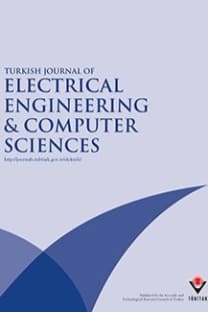A novel dynamic bandwidth selection method for thinning noisy point clouds
Curve reconstruction, eigenvalue analysis, point cloud processing, bandwidth selection, tangent estimation
A novel dynamic bandwidth selection method for thinning noisy point clouds
Curve reconstruction, eigenvalue analysis, point cloud processing, bandwidth selection, tangent estimation,
___
- H. Edelsbrunner, D.G. Kirkpatrick, R. Seidel, On the Shape of a Set of Points in the Plane, University of British Columbia, Vancouver, BC, Canada, 1981.
- D. Attali, “R-regular shape reconstruction from unorganized points”, Proceedings of the 13th Annual ACM Symposium on Computational Geometry, pp. 248–253, 1997.
- L.H.D. Figueiredo, J.D.M. Gomes, “Computational morphology of curves”, Visual Computer, Vol. 11, pp. 105–112, 19 F. Bernardini, C.L. Bajaj, “Sampling and reconstructing manifolds using alpha-shapes”, Proceedings of the 9th Canadian Conference on Computational Geometry, 1997.
- N. Amenta, M. Bern, D. Eppstein, “The crust and the beta-skeleton: combinatorial curve reconstruction”, Graphical Models and Image Processing, Vol. 60/2, pp. 125–135, 1998.
- T.K. Dey, P. Kumar, “A simple provable algorithm for curve reconstruction”, Proceedings of the 10th Annual ACM-SIAM Symposium on Discrete Algorithms, pp. 893–894, 1999.
- T.K. Dey, K. Mehlhorn, E.A. Ramos, “Curve reconstruction: connecting dots with good reason”, Proceedings of the 15th ACM Symposium on Computational Geometry, Vol. 15, pp. 229–244, 1999. E. Althaus, K. Mehlhorn, “TSP-based curve reconstruction in polynomial time”, Proceedings of the 11th Annual ACM-SIAM Symposium on Discrete Algorithms, pp. 686–695, 2000.
- T.K. Dey, R. Wenger, “Reconstruction curves with sharp corners”, Proceedings of the 16th Annual Symposium on Computational Geometry, pp. 233–241, 2000.
- T.K. Dey, R. Wenger, “Fast reconstruction of curves with sharp corners”, International Journal of Computational Geometry & Applications, Vol. 12, pp. 353–400, 2002.
- C. Gold, “Crust and anti-crust: a one-step boundary and skeleton extraction algorithm”, Proceedings of the 15th Annual Symposium on Computational Geometry, pp. 189–196, 1999.
- C.M. Gold, J. Nantel, W. Yang, “Outside-in: an alternative approach to forest map digitizing”, International Journal of Geographical Information Systems, Vol. 10, pp. 291–310, 1996.
- S. Funke, E.A. Ramos, “Reconstructing a collection of curves with corners and endpoints”, Proceedings of the 12th Annual ACM-SIAM Symposium on Discrete Algorithm, pp. 344–353, 2001.
- Y. Zeng, T.A. Nguyen, B. Yan, S. Li, “A distance-based parameter free algorithm for curve reconstruction”, Computer-Aided Design, Vol. 40, pp. 210–222, 2008.
- P. Kim, H. Kim, “Point ordering with natural distance based on Brownian motion”, Mathematical Problems in Engineering, Vol. 2010, Article ID 450460, 2010.
- T.K. Dey, “Curve and surface reconstruction”, in Handbook of Discrete and Computational Geometry, 2nd ed., CRC Press, Boca Raton, FL, USA, 2004.
- S.W. Cheng, S. Funke, M. Golin, P. Kumar, S.H. Poon, E. Ramos, “Curve reconstruction from noisy samples” Computational Geometry: Theory and Applications, Vol. 31, pp. 63–100, 2005.
- I.K. Lee, “Curve reconstruction from unorganized points,” Computer Aided Geometric Design, Vol. 17, pp. 161–177, 2000.
- G. Taubin, R. Ronfard, “Implicit simplicial models for adaptive curve reconstruction”, IEEE Transactions on Pattern Analysis and Machine Intelligence, Vol. 18, pp. 321–325, 1996.
- Z. Hasirci, M. Ozturk, “An eigenvalue analysis based bandwidth selection method for curve reconstruction from noisy point clouds”, 34th International Conference on Telecommunications and Signal Processing, pp. 478–482, 20
- ISSN: 1300-0632
- Yayın Aralığı: Yılda 6 Sayı
- Yayıncı: TÜBİTAK
Minimal controller synthesis algorithms with output feedback and their generalization
Jinping LIU, Weihua GUI, Zhaohui TANG
Görkem KÖKKÜLÜNK, Erhan AKDOĞAN, Vezir AYHAN
Hybrid SPR algorithm to select predictive genes for effectual cancer classification
Aruna SUNDARAM, Nandakishore Lellapalli VENKATA, Rajagopalan Sarukai PARTHASARATHY
A low-voltage and low-power sinh-domain universal biquadratic filter for low-frequency applications
SSR mitigation with SSSC thanks to fuzzy control
Seyed Mohammad Hassan HOSSEINI, Hadi SAMADZADEH, Javad OLAMAEI, Murtaza FARSADI
Hamed HASHEMI-DEZAKI, Seyed Hossein HOSSEINIAN, Hossein ASKARIAN-ABYANEH, Seyed Mohammad Mousavi AGAH
